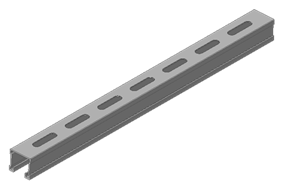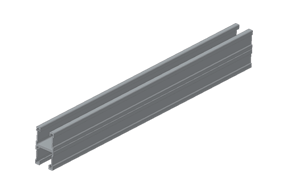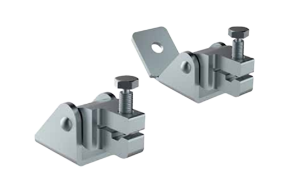Support
Popular Products
-
Q What are the uses and characteristics of busway?
The various series of bus channels produced by this company are applicable for high buildings, industrial factory building with many floors, workshops with concentrated lathed and with varied technology, the old workshops rebuilt, various labs, exhibition halls, gyms, hotels, banks, entertainment and other places, and used for feeding and distributing electricity. It has the characteristics of sagfly&reliability, easy installation, flexible construction, small volume but large capacity, short cycle for construction, long service life and the like. -
Q What are the function units of busway?
There are Straight busway, Straight with socket, Top busway, L horizontal elbow, L vertical elbow, T horizontal tee, T vertical tee, Top access box, Reduction joint, Feeder joint, Expansion joint, Horizontal cross, Vertical cross, Z horizontal elbow, Z vertical elbow and Terminal cover.
-
Q Busway system has 4P and 5P, what is the difference?
4P is the integral grounding technology of the shell, which is currently used in many projects.
5P is PE ground, normally 50% of the PE line specification is sufficient. -
Q What’s the Conductor?
The conductors of the Busway system are normally tinplated or silver plated, totally covered with highly insulation material.
XMMX-XL C is copper system; XMMX-XL A is aluminum system. Aluminum conductor should be nickel-plated and copper-plated before tin-plated. -
Q What’s the Enclosure?
The system adopts excellent alloy as enclosure material, enjoys non-magnetism, environment protection, light weight and fast heat dissipation capability. No-eddy current loss when system on loading. Airproof sealing parts for assembly keep the high IP capacity; Top and bottom aluminum extruded profile provide high strength and better locating. The surface is static painted and passed the 1200h salt withstand test, which can meet the high air humidity, salt separating, high pollution.
-
Q What is a the Busway?
Busway distribute electricity with greater ease and flexibility than some other more permanent forms of installation and distribution. Sometimes spelled bus bar or buss bar, they are often metallic strips of copper, brass, or aluminum that both ground and conduct electricity.
Different coating materials provide different conductivity limits and variations in the length of a product’s useful life. Busway can also come in a multitude of shapes and sizes which affect the ampacity of the product. The word ampacity refers to the maximum amount of electric current a conductor can carry before sustaining critical levels of deterioration.
Other reasons that busway are popular:Reduced facility costs
Because less construction labor means installation is less expensive and there are no costly changes and outside labor costs for electrical specialists.Faster installation
Because building projects are up and running faster plus the ability to add, remove or relocate power easily and quickly with no downtime.Flexibility for the future
Because some plug-in units can be disconnected and reconnected without de-energizing, require no routine maintenance and are faster and less costly for expansion or remodeling.Environmentally friendly
Because busway often require fewer installation materials and plug-in outlets are reusable and re-locatable.Recent advancements to the structural integrity of busway systems have proven changing the shape of the copper busway greatly improves the efficiency, exposing more of the copper surface area and increasing a balanced electrical flow while decreasing its ampacity.




 Strut Channel
Strut Channel Back to Back Strut Channel
Back to Back Strut Channel Connecting Base Fitting
Connecting Base Fitting


